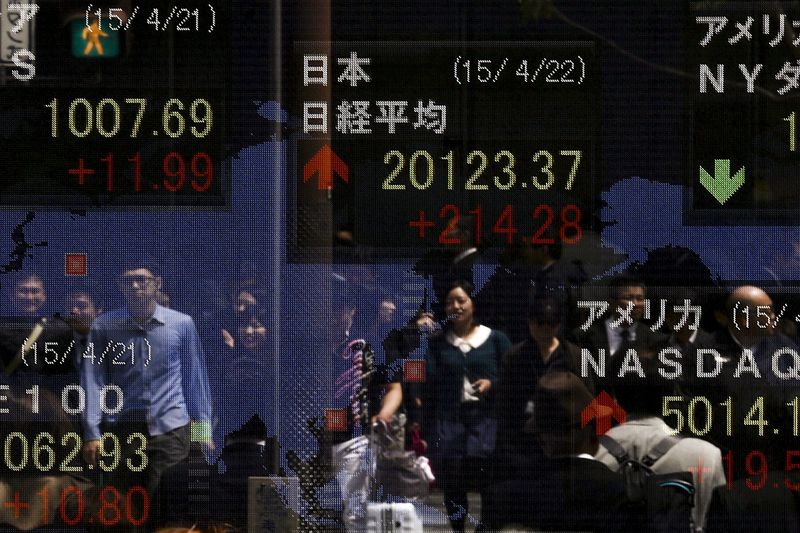This post was originally published on this site

Investing.com – Asian stocks were mostly up on Tuesday morning, ahead of the U.S. presidential debate scheduled to take place later in the day.
The debate between President Donald Trump and Democratic candidate Joe Biden will be closely watched in the run up to November’s presidential elections.
Investors are also keeping an eye on developments for the latest U.S. stimulus measures after Democrats unveiled a new $.2.2 trillion package on Monday. U.S. House of Representatives Speaker Nancy Pelosi said on Monday that the reduced package cost was a compromise measure.
Some investors remained hopeful that the measures would see the measures passed by the U.S. Congress ahead of the elections.
“We definitely need another round of stimulus here, not only for confidence for the American public and workers, but also for the markets,” Portia Capital Management owner and president Michelle Connell said on Bloomberg.
“Going into this election, that would definitely help. I’d expect the markets to be weak, volatile, and have some downside here as we’re waiting to find out who our next president is,” she added.
Japan’s Nikkei 225 was down 0.26% by 11:36 PM ET (3:36 AM GMT), while South Korea’s KOSPI gained 0.69%
In Australia, the ASX 200 inched up 0.05%. and Hong Kong’s Hang Seng Index fell 0.62%.
China’s Shanghai Composite was up 0.52% while the Shenzhen Component jumped 1.02%. Investors await Chinese economic data, including the manufacturing and non-manufacturing Purchasing Managers Indexes (PMIs), as well as the Caixin manufacturing PMI, due to be released on Wednesday, to gauge China’s recovery from COVID-19.
Meanwhile, the U.S. is also due to release economic data throughout the week, including September’s Conference Board (CB) consumer confidence index later in the day, the Institute of Supply Management (ISM) Manufacturing Purchasing Managers Index (PMI) on Thursday, and jobs data on Friday.
Meanwhile, the number of global deaths from the virus topped the 1 million-mark, with over 33.2 million global cases as of Sep. 29, according to Johns Hopkins University data.
The World Bank also warned in its October Economic Update for East Asia and the Pacific, released on Monday, that the virus would limit growth in East Asia and the Pacific as well as China to 0.9% in 2020, the lowest rate since 1967. The report also said that growth in China would be 2% for 2020, attributable to government spending, strong exports and a low rate of new cases since March but limited by slow domestic consumption. Meanwhile, growth in the rest of the region is projected to contract by 3.5%.
“Globally, a loss of momentum and the renewed rise in COVID-19 infection rates points to the need for additional fiscal and monetary support. That policy outlook is continuing to provide a supportive backdrop to equities despite recent volatility,” ANZ Bank New Zealand analysts said in a note.


